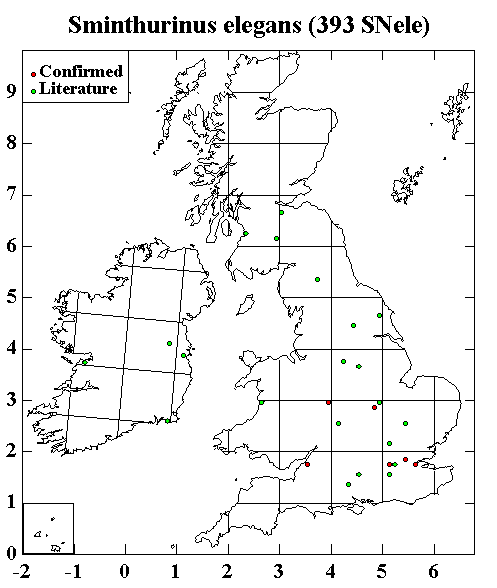|
Sminthurinus species are very variable in colour pattern and it is essential to examine the presence or absence of ventral subapical setae on the dens in order to make a correct identification.
The Sminthurinus 'aureus -group' includes species of Sminthurinus without ventral subapical setae on the dens. According to Bretfeld (1999), specimens without clear patterning on the abdomen should be recorded under the name Sminthurinus aureus. Specimens with clear patterning on the abdomen should be recorded under the names Sminthurinus elegans (four longitudinal bands), Sminthurinus signatus (two longitudinal bands) or Sminthurinus bimaculatus (pronounced white spot on either side of the abdomen). However, it is possible that all these 'species' are simply colour varieties of one taxon that should be called Sminthurinus aureus. For the moment, I have decided to key them out separately.
Sminthurinus elegans is common and widespread and is found mainly in low vegetation in drier situations than Sminthurinus aureus. It reaches 0.7 mm in length and is yellowish in colour with four bluish black longitudinal bands. The fourth antennal segment (ant4) is NOT subdivided. The outer margin of the mucro is smooth and the inner margin is serrated (Fig. 1). Ventral sub apical setae are NOT present on the dens (Fig. 2). In females, the long setae surrounding the anus are expanded at the base (Fig. 3) and the sub-anal appendages (SAA) are feathery at the tips (Fig. 4). The empodium of the second and third legs (leg2 and leg3) is slightly shorter than the claw, but is longer than the claw on leg1.
Back to main page
|
|









